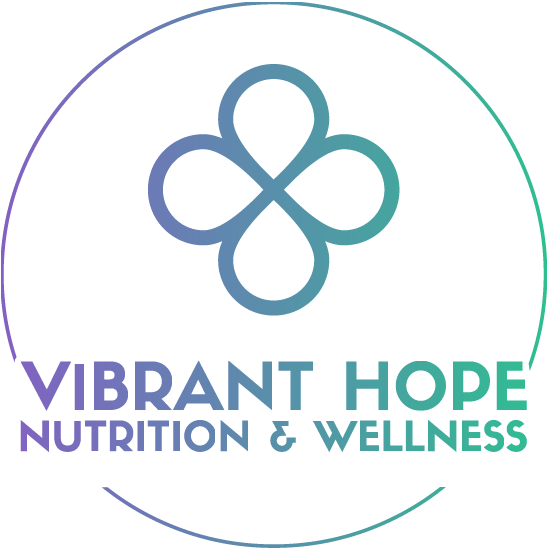Show Your Heart a Little Love! Celebrate American Heart Month with Heart Healthy Nutrition Tips
Even though Valentine’s Day has already come and gone, there is still a reason to celebrate and wear red because February is American Heart Month. So, let’s show a little love to our hearts this month!
Heart disease is the most prevalent chronic disease in America. It is also one of the most preventable diseases! As many people know, lifestyle is a main contributor to the development and worsening of heart disease. The good news is, there are many delicious foods that contain nutrients that can benefit your cardiovascular system! These nutrients include:
- Monounsaturated fatty acids
- Omega-3 fatty acids
- Soluble fiber
- Antioxidants: Vitamins C, E, beta-carotene, and phytochemicals
For those of you who don’t know what to do with this information, let me translate these nutrients into specific foods you can add to your grocery list for more heart healthy meals and snacks!
Monounsaturated fats are found in:
- olives and olive oil
- avocados and avocado oil
- peanuts and peanut oil
- other nuts and seeds
- safflower oil
- sesame oil
When monounsaturated fats (MUFAs) replace saturated fats in our meals and snacks (think olive oil replacing butter), the MUFAs can help lower overall blood cholesterol levels, as well as LDL (bad) cholesterol, and triglycerides.
The major Omega-3’s, eicosapentaenoic acid (EPA) and docosahexaenoic acid (DHA) can be found in high amounts in:
- oily fish (salmon, tuna, mackerel, and sardines)
- fish oil capsules
There is another Omega-3 fatty acid known as alpha-linoleic acid (ALA) that can be found in:
- Flaxseeds
- walnuts and walnut oil
- soy beans
- Small amounts in certain vegetables
These Omega-3’s are correlated with a lower risk of developing plaque in your arteries. ALA is known to be anti inflammatory. Overall Omega-3’s are seen as protective to your cardiovascular system!
Soluble fiber can be found in foods like:
- Oatmeal
- The fleshy part of an apple
- Bananas
- Beans
- Avocados
- Flaxseeds
- Carrots
- Broccoli
- Turnips
This type of fiber acts like a sponge by helping pull blood cholesterol into the stool as a waste product to be eliminated! It can also help balance blood sugar levels. Another amazing fact is that even though humans can’t digest fiber, the helpful bacteria that live in your gut can! These bacteria then produce products like acetate, propionate, and butyrate which are fancy terms for fatty acids that can help prevent cholesterol formation and repair any damage to the heart caused by high blood pressure!
The fourth group of heart healthy nutrients is antioxidants. The antioxidant Vitamin C can be found in:
- Strawberries
- Citrus fruits
- Bell peppers
- Broccoli
- Kiwi
- Brussel sprouts
High Vitamin E foods are:
- Almonds
- Peanuts
- Hazelnuts
- Leafy green vegetables
- Sunflower seeds
Beta Carotene is found in:
- Orange foods like carrots, sweet potatoes, butternut squash, and apricots
- Leafy green vegetables
- Broccoli
Certain phytochemicals called catechins and polyphenols are powerful antioxidants for the cardiovascular system and are found in foods like red grapes, red wine, green tea, berries, apples, cherries and tart cherry juice, and dark chocolate. Antioxidants help decrease inflammation and lower oxidative stress.
You may have heard of the Mediterranean and DASH (Dietary Approaches to Stop Hypertension) diets, which are commonly recommended as heart healthy eating patterns. This is because both recommend foods that contain high levels of the nutrients we’ve talked about. They promote eating plenty of fruits and vegetables, whole grains, fatty fish, lean meats, lower fat dairy products, nuts, legumes, olive oil, reducing sugar and sodium, and decreasing consumption of red meat. Following these guidelines will help you incorporate these heart healthy nutrients into your diet each day, helping reduce your risk of heart disease one bite at a time!
References:
- Raymond JL, Couch SC. Medical Nutrition Therapy for Cardiovascular Disease. In: Mahan KL, Raymond JL, ed 14. Krause’s Food and the Nutrition Care Process. St. Louis, Missouri: Elsevier; 2017. Chapter 33.
- American Heart Association. Monounsaturated Fat. American Heart Association. https://www.heart.org/en/healthy-living/healthy-eating/eat-smart/fats/monounsaturated-fats. February 22, 2019.
- Penn State Hershey Milton S. Hershey Medical Center. Alpha-linolenic Acid. Penn State Hershey Milton S. Hershey Medical Center. http://pennstatehershey.adam.com/content.aspx?productId=107&pid=33&gid=000284. February 22, 2019.
- Health Line. Top 20 Foods High in Soluble Fiber. Health Line. https://www.healthline.com/nutrition/foods-high-in-soluble-fiber#section6. February 22, 2019
- Science Daily. How dietary fiber and gut bacteria protect the cardiovascular system. Science Daily. https://www.sciencedaily.com/releases/2018/12/181221123541.htm. February 22, 2019.
- Healthy Line. 20 Foods that are High in Vitamin C. Health Line. https://www.healthline.com/nutrition/vitamin-c-foods#section21. February 22, 2019.
- Medline Plus. Vitamin E. Medline Plus. https://medlineplus.gov/ency/article/002406.htm. February 22, 2019.
- My Food Data. Top 10 Foods Highest in Beta Carotene. My Food Data. https://www.myfooddata.com/articles/natural-food-sources-of-beta-carotene.php. February 22, 2019.
- Paula Martinac. Foods High in Catechins. SF Gate. https://healthyeating.sfgate.com/foods-high-catechins-4512.html. February 22, 2019.
